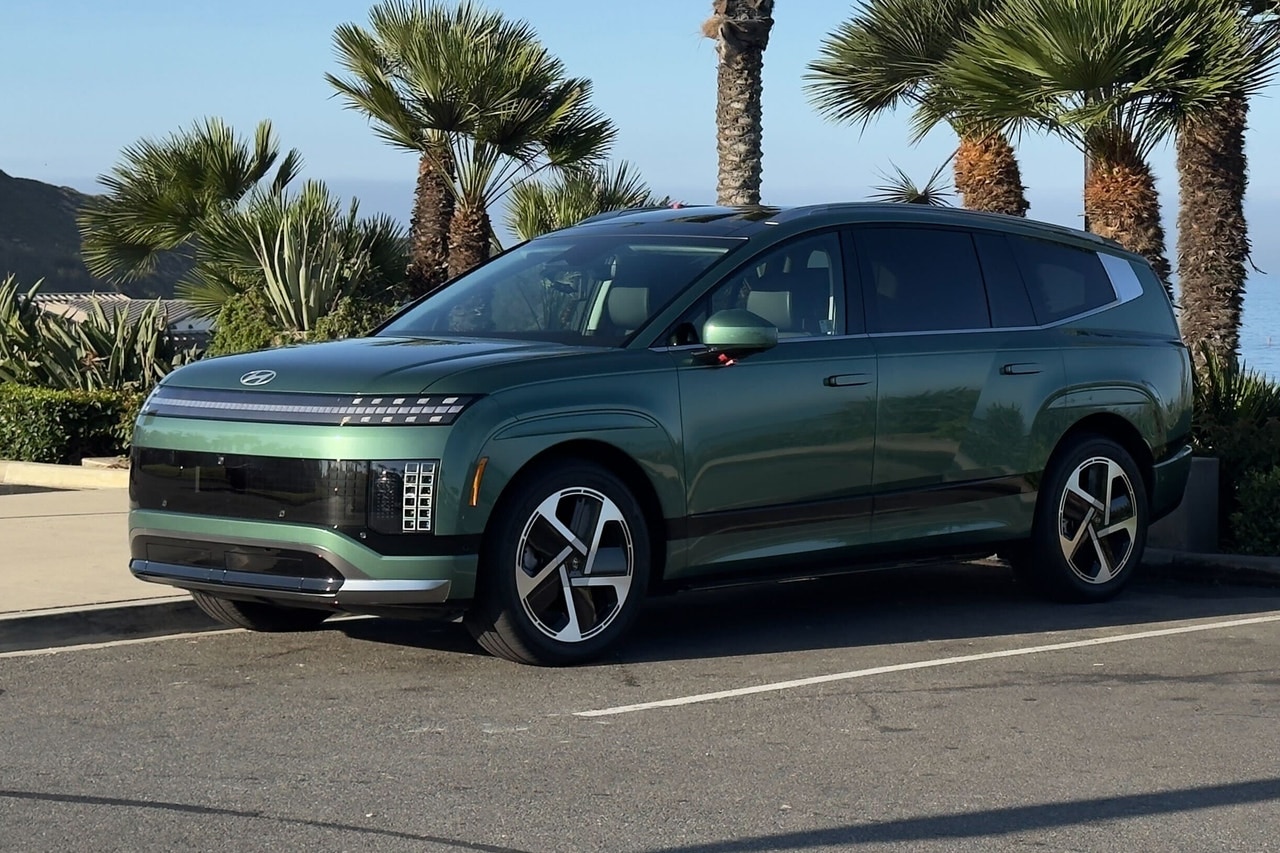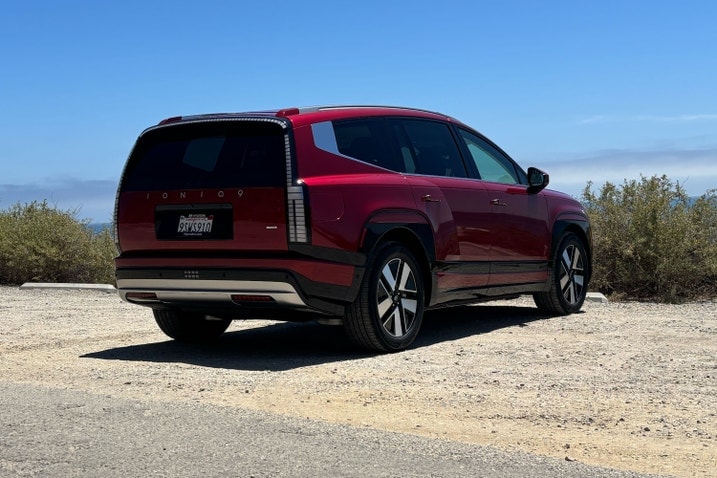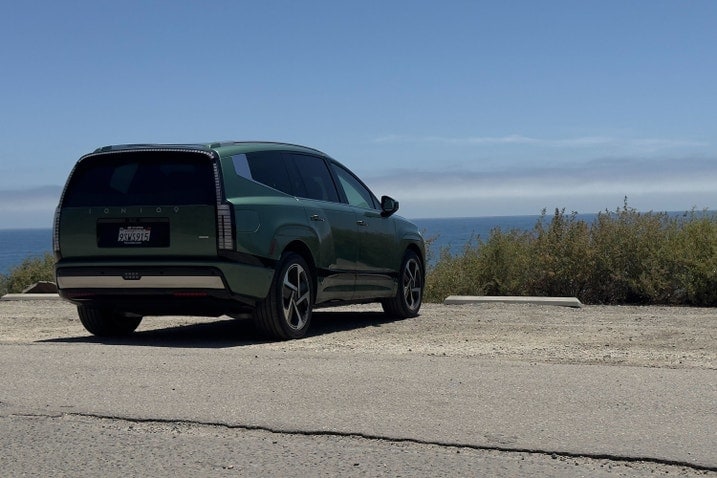- We put two versions of the Hyundai Ioniq 9, the SEL and Calligraphy, through the Edmunds EV Range Test.
- The were only minor differences in the way these cars were configured.
- The end result is a gain in range that's so small, you might not even need to think about it.
2026 Hyundai Ioniq 9 Range: Two Trims, Two Tests, Two Big Numbers
Turns out wheel size can make a difference
The Ioniq 9 is now Hyundai's biggest EV and the excellent Kia EV9's mechanical twin. We've already driven it on the road and put it under the microscope at our test track. But now we've put not one, but two versions of the Ioniq 9 — an SEL trim and a Calligraphy model — through the Edmunds EV Range Test to see how far they'll go in the real world.
Despite being mechanically the same — both models are powered by a 110.3-kWh battery and have electric all-wheel drive thanks to two electric motors, one front-mounted and one at the back — the two different trims beat their EPA estimates by different amounts. We dug into our findings and test data to figure out why.
In our test, the SEL model (seen above in red) traveled 366 miles on a single charge, well beyond the EPA's estimate of 320 miles. The Calligraphy model has an EPA estimate of 311 miles, but in our hands, it achieved 349 miles on a single charge. The SEL overachieved by 46 miles, or 14.25%, while the Calligraphy model bested its EPA number by 38 miles, or 12.2%.
Both cars were tested on the same day in the same weather conditions. The average temperature was 74 degrees ambient, nearly perfect weather to maximize a big battery's efficiency. It's also worth noting that the 4.9% difference between the two cars in our test results is more than the 2.9% difference between the two range figures estimated by the EPA. But why did one outperform the EPA by more than the other?
To remove as many variables as possible, every single EV we test must be driven and operated in the same way. The rules dictate our test drivers stick to a 60/40 split of highway and city driving, respectively. The air conditioning is set to auto at 72 degrees to measure how well the car manages energy use to cool itself down, especially on hot summer days (and to eliminate any variance in driver preference). Additionally, both cars followed the exact same routes at the exact same time of day, so both faced the same traffic patterns too.
That means wheel sizes and the minor difference in their curb weights are the explanations for the discrepancy in how well each outperformed the EPA's range estimate. The SEL model had 20-inch wheels, while the Calligraphy rode on 21s. The Calligraphy model was also 222 pounds heavier than the SEL — but when both models are hovering around the three-ton mark, the weight difference is almost entirely negligible. They also wore different tires, but both were range-maxing, low-rolling-resistance EV-minded sets of rubber.
As it turns out, smaller wheels do make a difference in how far EVs go, but perhaps not as much as you'd think. Will you notice the extra few miles? Maybe on the occasional road trip, but after testing both models, both Ioniq 9s had plenty of range for the day-to-day. So, rest easy — if you go for the model with the bigger wheels, you aren't going to pay the price by getting stuck on the side of the road.






 by
by  edited by
edited by